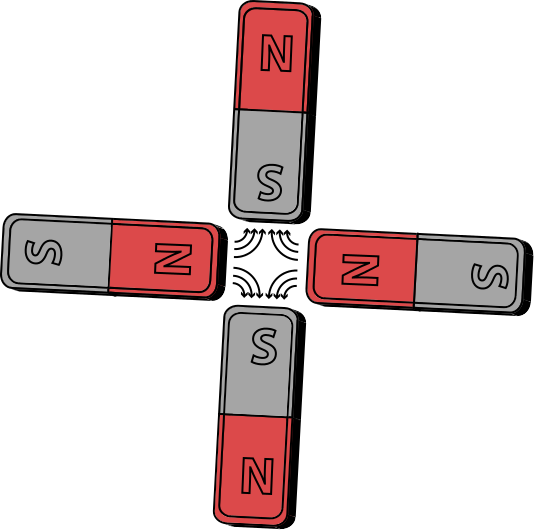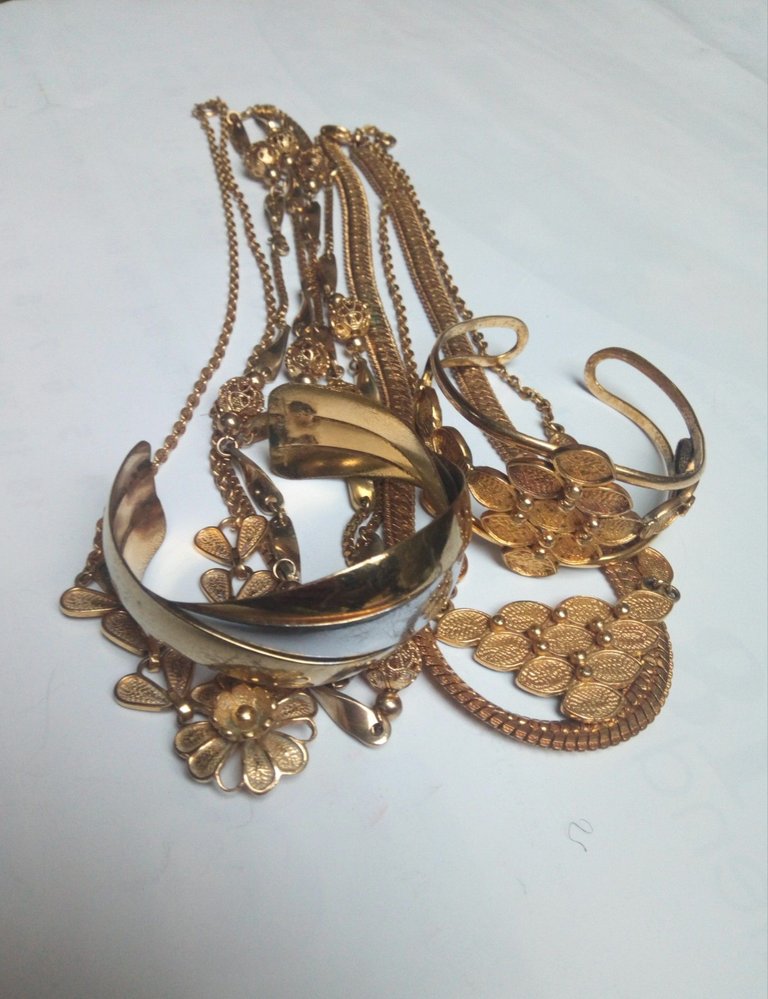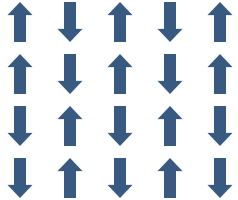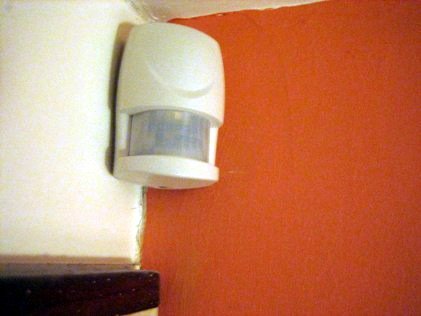Hello Steemians, good day and welcome to my blog. Hope you are good.
A few days ago, I visited my sister who is a seamstress. I was enjoying the cool atmosphere when I saw a magnet, she uses it to attract iron/metal sewing materials together, from getting misplaced.
At that moment I remembered the good old days when I use the south pole of a particular magnet to race the south pole of another.
I did not know about the like or unlike poles of a magnet then, I was just a kid who wanna have fun with the repulsion of a magnet (I guess some of you enjoyed doing that as well...lol).
So I decided to have a closer look at magnetism and its applications. Below are few things I was able to come up with.

MAGNETISM
Magnetism according to wikipedia is a class of physical phenomena that are mediated by magnetic fields. The magnetic moments of elementary particles and electric currents give rise to a magnetic field, which acts on magnetic moments and other currents. It is also a force that acts at a distance and is caused by a magnetic field.

Magnets have two poles, known as the north (N) and south (S) poles.
A magnetic field consists of imaginary lines of flux coming from moving or spinning electrically charged particles. Examples are the motion of electrons through a wire in an electric circuit and the spin of a proton.
What a magnetic field actually consists of is somehow a mystery, but we do know it is a special property of space.
PROPERTIES OF A MAGNET
- Magnets attract objects of cobalt, nickel, and iron
- The magnetic force of attraction of a magnet is more massive at its poles than in the middle.
- Two magnets with like poles repel each other.
- Two magnets with opposite poles attract each other.
- When a bar magnet is suspended by a thread and if it is free to rotate, the South Pole will move towards the North Pole of the earth and inversely.
TYPES OF MAGNETISM
All magnetic materials contain magnetic moments, which behave in a way similar to microscopic bar magnetic.
- PARAMAGNETISM
In a paramagnet, the magnetic jiffy moments is prone to be randomly aligned due to thermal variations when there is no magnetic field. But in the case of an applied magnetic field, these moments start to align parallel to the field such that the magnetization of the material is proportional to the applied field.
The alkaline earth metals, aluminum, oxygen and most transition metals are all paramagnetic.
- FERROMAGNETISM
There is a tendency for the magnetic moments in a ferromagnet to become aligned parallel to each other under the influence of a magnetic field. Ferromagnetic materials are intensely attracted to a magnet. Examples of ferromagnetic materials are nickel, iron, cobalt, and steel.
- ANTIFERROMAGNETISM
Adjacent magnetic moments from the magnetic ions tend to align antiparallel to each other without an applied field. In the easy-peasy case, adjacent magnetic moments are comparable in magnitude and opposite, therefore, there is no overall magnetization.
- FERRIMAGNETISM
The aligned magnetic moments are of different size; i.e, there is more than one type of magnetic ion. When a general magnetization is produced, not all the magnetic moments may give a favorable contribution to the overall magnetization.

APPLICATIONS OF MAGNETISM
Magnetism has various applications in different branches of industry and trade.
The different alloys of nickel, cobalt, and iron depict some of the material with enormous magnetic properties, so, they are employed in specific devices to override other metals by applying magnetic power over them.
It has been discovered through experimentation that any material can be more or less affected by magnetic materials, which has resulted in its application in different branches of industry and commerce, likewise with the manufacture of electrical appliances, such as buzzers, moving large pieces, speakers, and separation of different metals by magnetic levitation.
Magnetism has culminated in more than just a technological and industrial revolution in recent years; it has as well added an area to exploit as regards jewelry design. A magnetic jewelry is well known as a trend that brings stylishness and status to an appearance in a fun way.

MAGNETIC JEWELRIES (image taken by me)
However, there are some recommendations to take into consideration when using a magnetic jewelry. First, there are people who have various reactions to the presence of certain metals, such as nickel. Allergies resulting from the use of certain jewelry are very well known.
This is due to the unbefitting choice of the item, which can finally cause irritation caused by the metal the jewel was made of or alterations in the skin.
As mentioned earlier, nickel is a vital metal in magnetism, for this reason, it is recommended to choose jewelry with a chrome plating treatment, so as to avoid the possible allergies.
In respect to this, only a limited use of a magnetic jewelry is recommended. It is advised not to use them daily, or for a long time. Only make use of them in those special moments you want to stand out from the crowd. This doesn’t mean you should pay no attention to them because it is one of the best applications for magnetism.
Difficult to demagnetize magnetic materials are used to construct permanent magnets. Permanent magnet applications are in electric meters, loudspeakers, small motors, and earphones. A loudspeaker comprises a wire carrying an alternating current. It experiences a force that creates a sound wave by alternate compression and rarefaction of air in the environs when the alternating frequency of the current is in the audible realm if the wire is present in the magnetic field of the permanent magnet.
More applications of magnetism can be found in the area of magnetic recording and storage devices in computers, and in video and audio systems. Floppy disks consist of dozens of tracks on which data can be digitally written in or stored by means of a write-head which can be accessed or read with the aid of a read-head.
A write-head generate a strong local magnetic field to the region through which the storage track of the disk is passed. The read-head notices stray magnetic flux from the storage track of the disk as it passes over the head.

DEBIT CARD (image taken by me)
Another fine example of digital magnetic storage and reading is the magnetic strip of plastic debit and credit cards. The magnetic strip contains identification data which can be accessed through an automatic teller machine.
Electromagnets are also utilized as main components of transformers in power supplies that transmute electrical energy from a wall outlet into direct current energy for a wide variety of electronic devices and in motors and generators. Superconducting magnets (this is where superconducting coils generate the magnetic field) dispense the magnetic field in MRI (magnetic resonance imaging) devices that are now used broadly in medical centers and hospitals.
Magnets for Detection: MRI, Magnetometers, and Burglar Alarms.
A burglar alarm is not much more complex as a compass which is a simple magnetic instrument. A magnetometer, on the other hand, is a much more advanced piece of machinery for detecting the strength of magnetic fields. However, the magnetometer bears a relation to its simpler cousins: like a burglar alarm, other varieties of magnetometer are employed for security.
A burglar alarm consists of a contact switch, which reacts to changes in the environs and transmits a signal to a noisemaking device. The contact switch may be magnetic or mechanical, for instance, a simple fastener. In the first case, a permanent magnet may be installed in the frame of a door or window, and a piece of magnetized material in the door or window itself. So once the alarm is activated, it will respond to any change in the magnetic field—i.e., when someone slides open the window or door, thus breaking the connection between magnet and metal.
In some cases, burglar alarms may vary in their entanglement, and indeed there may be much more sophisticated systems using infrared rays or microwaves.
A simple matter of responding to changes in a magnetic field is the application of magnetism in home security. In respect to that, the principle governing magnetometers often used at security checkpoints is even simpler.
A magnetometer detects the presence of magnetic metals, whether at the entrance of a high-security venue or at an airport, whether stationary or handheld. This brought forth a fairly efficient means of detection, forasmuch as the broad majority of knife-blades, firearms, and other weapons are made of steel or iron.

CONCLUSION
Since the human discovery in 10 centuries B.C, magnets have been used by them. Their precise action and power have caused fright and curiosity at the same time.
Over the centuries magnets have been applied in many fields of human life. Presently, magnets and magnetic fields also have a vast range of real medical applications.
Students also learn useful applications of magnetism in everyday life and experience magnetism as related effects.
Thanks for reading my blog, I hope you have learned something. You're free to drop other applications of magnetism or your view in the comment section as I am waiting for that.
REFERENCES
1. basics of magnetism hereblog@steemstem here and these guidelinesproper use of images devoid of copyright issues hereIf you write STEM (Science, Technology, Engineering, and Mathematics) related posts, consider joining #steemSTEM on discord . If you are from Nigeria, you may want to include the #stemng tag in your post. You can visit this by @stemng for more details. You can also check this blog post by for help on how to be a member of @steemstem. Please also check this blog post from @steemstem on
2. types of magnetism
3. different types of magnetism
4. guide to types of magnetism
5. magnetism applications
6. applications of magnetism
7. real-life applications of magnetism

.png)


Weldone bro. I never knew magnets had such a wide area of application
Yeah, they really do and I'm excited you learned something from my post. Thanks for your comment.
The importance of magnetism can not be overemphasized. They have applications in radio, telephone, computers etc. Nice of you to explain in the the science of magnetism.
Thumbs up bro.
Thanks for your contribution... Appreciated!
Magnetic Levitation is one application of magnetism. And that is what you were doing as a child. Today's high speed trains employ magnetic levitation and even the proposed hyperloop by Elon musk.
This concept has direct impact on our lives in the area of power generation. Our portable home generators used magnetism and even the gigantic alternators in power stations.
Well done for putting this together.
Thanks for that...
A day is not enough to keep listing the applications of magnetism, we have varieties of them.
Gracias!!
Now the field of magnetism and electricity are known as # ELECTROMAGNETISM. It finds application in all spheres of our daily lives.
Great post!
Yeah dear, they are found in motors, tape decks, hard drives, VCRs and tons of other devices.
Thanks for stopping by.
The impact of magnetism is felt virtually by everyone one way or the other.. From radios to electricity generation magnets are responsible for this..
Well done @whytepresh. I hope to see more of this educative stuff from you.
Thank you sir! Won't let you down.
Magnets everywhere! The speakers, mobile phones, ATMs.
Nice post sir, well done!
Thanks for stopping by sir steemic mechanic😁
This is a great concept.
Thanks for stopping by...
Very nice article, I did not know about the four types of magnetism. I urge you to also research the effects of magnetic induction and the use of permanent magnets in electricity generation. I believe the permanent magnet's source of energy is the future energy source for our civilization. We have been using brute force to spin magnets inside coils to generate electricity for over a century. The next generation of energy production will take advantage of the vortex that the magnet produces in the ether. Here are a couple of videos I found that helped me.